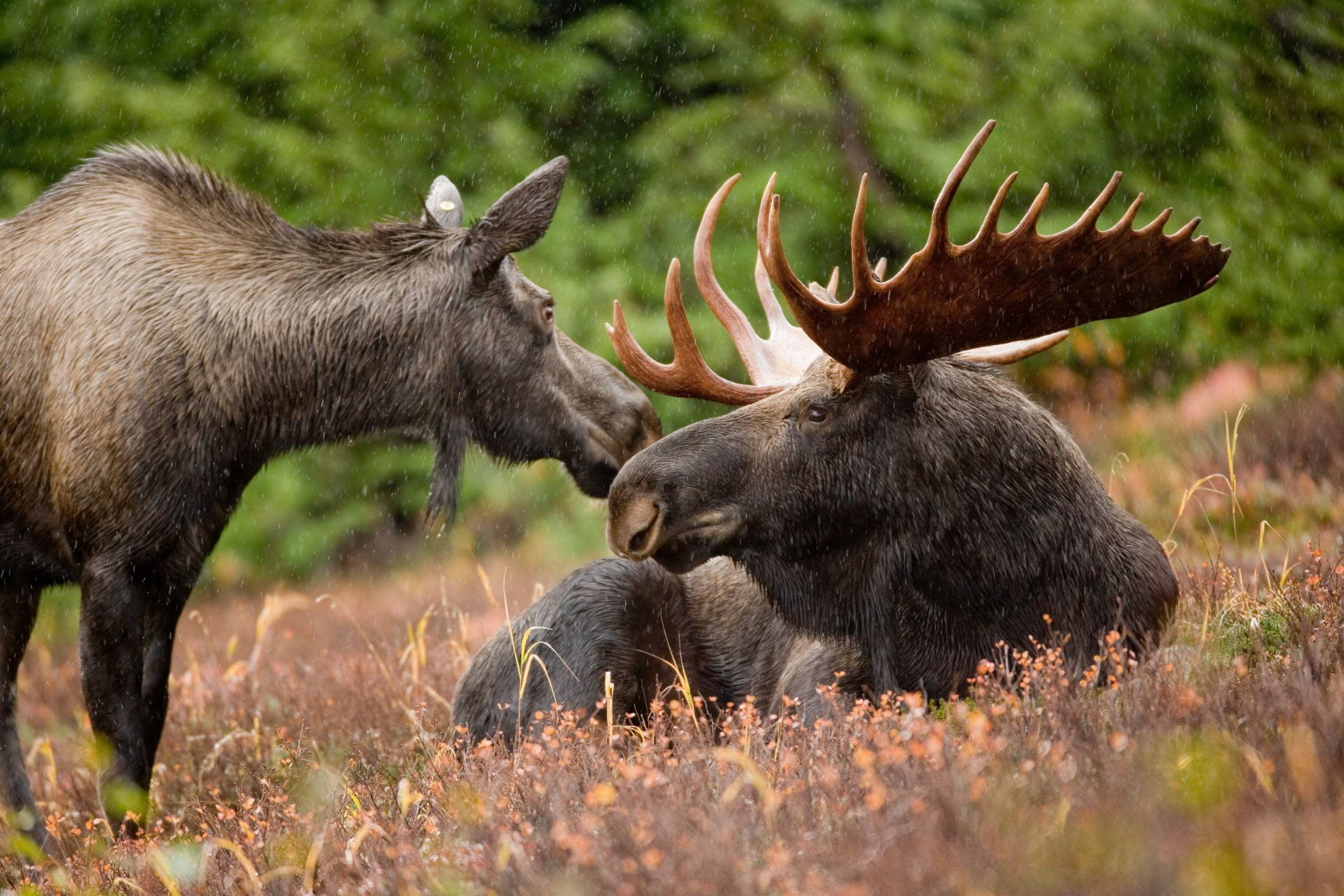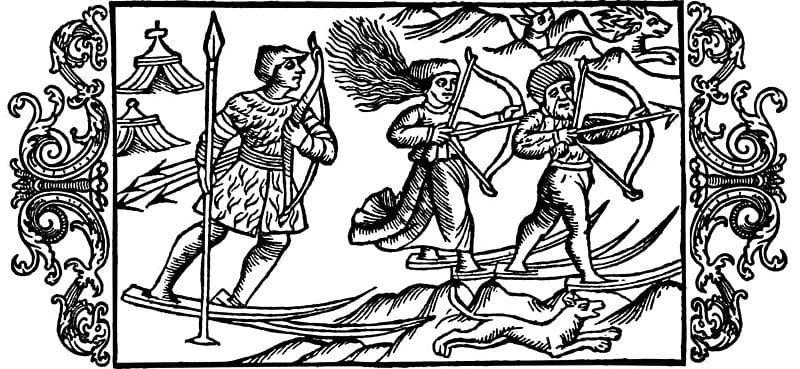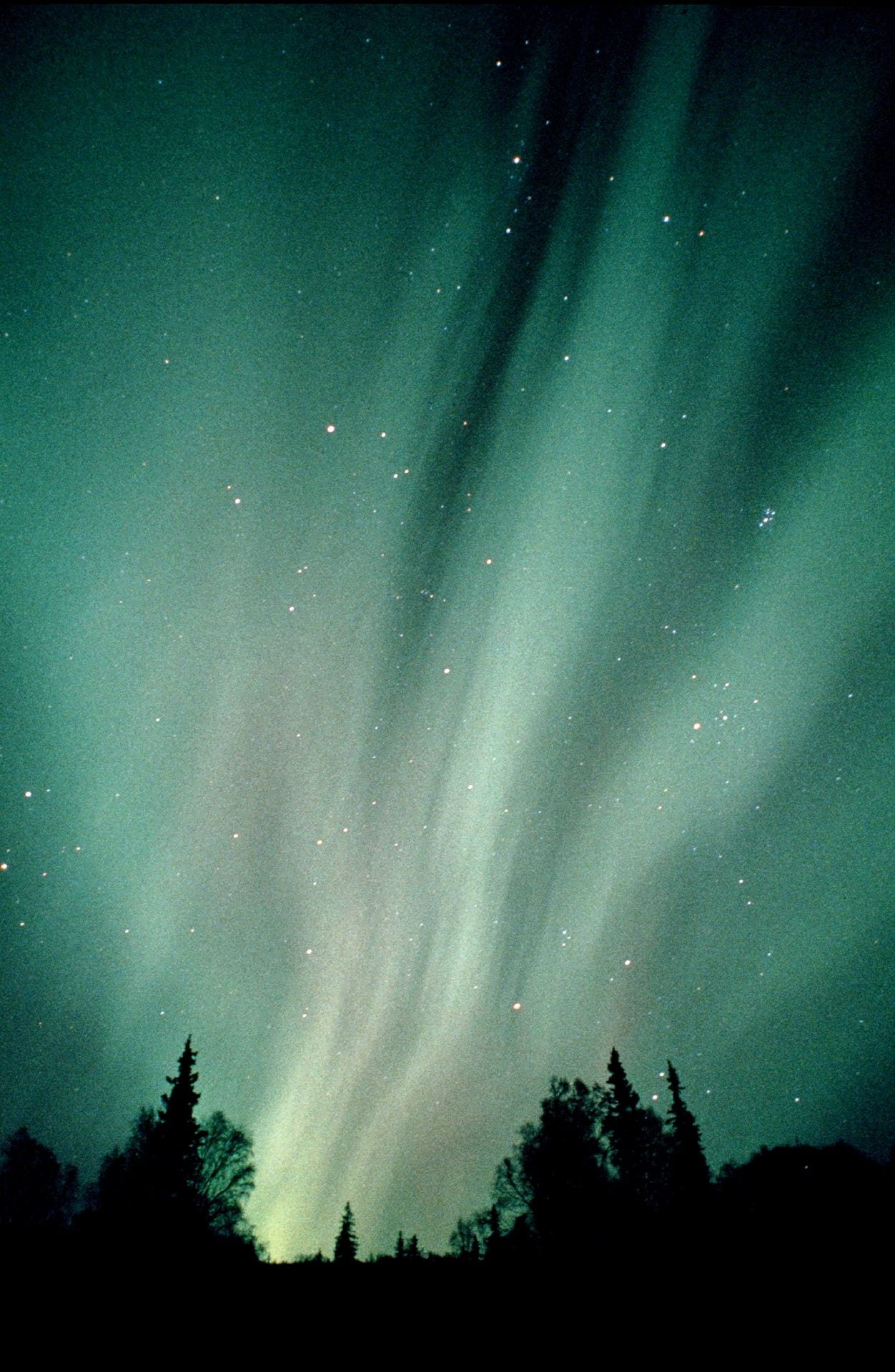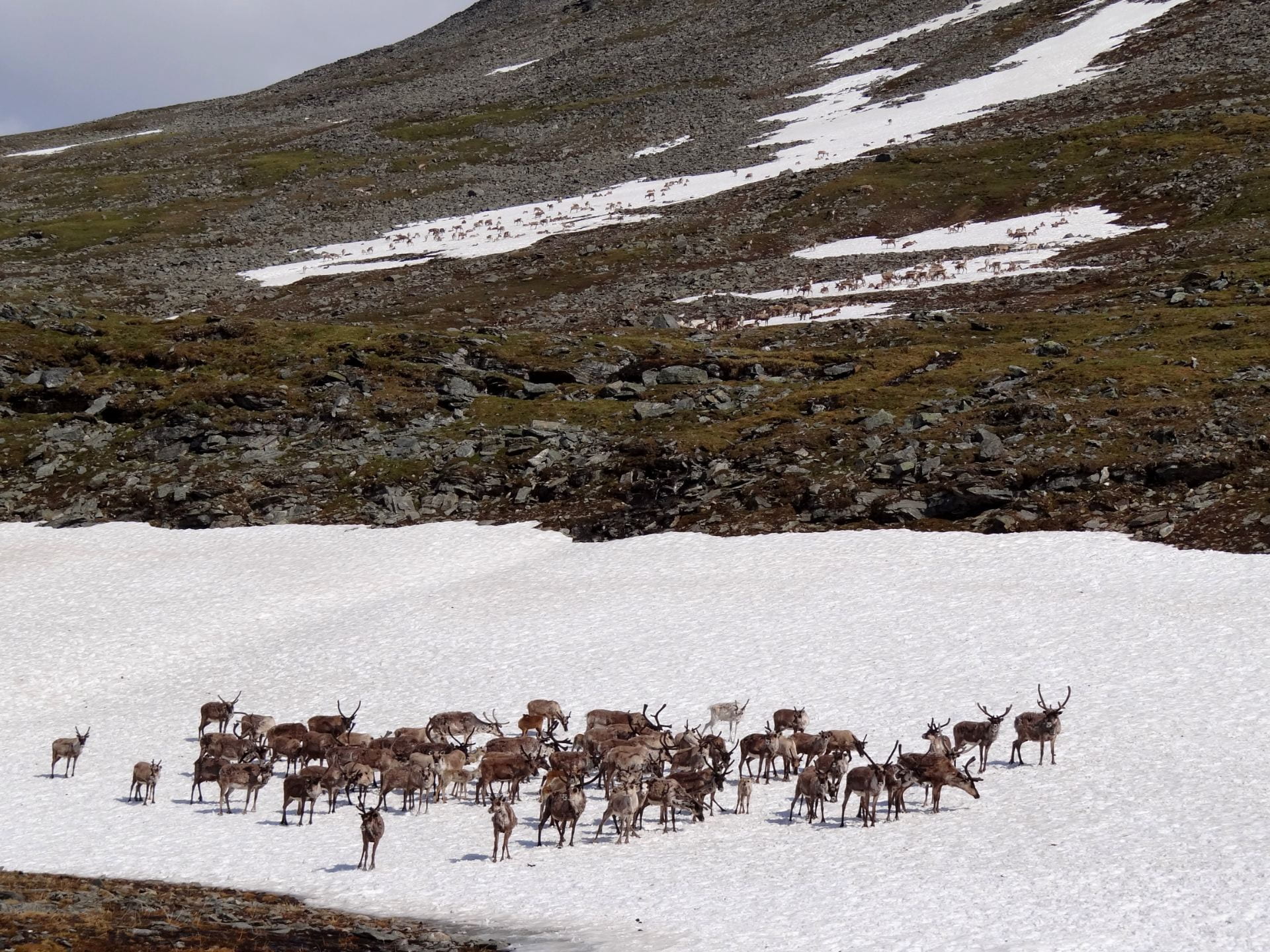Saami Astronomy
Entry by Michelle Scalise Sugiyama
According to Saami cosmology, the sky is supported by a pillar topped by the North Star. Known as the Pillar of the World, this star remains fixed, holding everything in place as the other stars circle around it. Arcturus, or Fȧvdna, is a hunter and Ursa Major is his bow and arrow. The Western asterisms Cassiopeia, Perseus, and Auriga are conceptualized as one giant constellation called the Moose (or “elk” in British English), with Cassiopeia forming the antlers. The star Sirius is a man called Old Gállá, and the stars Castor and Pollux (part of the Western constellation Gemini) are his sons. They are called the Skiers or the Skiing Moose Hunters. Some Saami picture Orion’s Belt as a dog or dogs who, along with Fȧvdna, Old Gállá, and his sons, are pursuing the Moose. The Pleiades are pictured as a flock of reindeer calves, and the Milky Way is called the Birds’ Ladder. Venus is called the Morning or Evening Star; during the darkest part of the year it can been seen day and night.
Photo by Ryan Hagerty
Saami hunting on skis | Image by Olaus Magnus
“By looking at the sky a person can forecast the weather, find directions and tell the time. When the morning star appears, one knows that morning is on its way. The Birds’ Ladder tells about the coming winter, how much snow will fall and when it will come.”
—Kuoljok & Utsi (1993:15)
Illustration by Carl Axel Magnus Lindman
Traditionally, the Saami used the heavens to navigate, tell time, and predict the weather. The solstices and equinoxes were important in the Saami calendar: the winter solstice marked the beginning of the year, while the equinoxes marked migration periods and seasonal shifts in economic activities. The Birds’ Ladder was used to infer when the annual winter snowfall would begin, and how heavy it would be, while a cloudy sky on New Year’s Eve foretold of frosty summers. The skies were also used to predict resource abundance and/or quality. For example, a clear sky on New Year’s Eve indicated that it would be a good year for raspberries.
The northern lights, too, were used for weather prediction. When they appeared low on the northern horizon, a cold spell was coming. When they moved across the sky from the southwest, a southwesterly wind could be expected. And when they shone very brightly, snow and storms were imminent (Bernatzik & Ogilvie 1938:47).
“Sometimes these northern lights . . . illuminate the whole night. Often they creep along the horizon as narrow streamers or move slowly across the entire firmament towards the south. At other times they shoot upwards as flames which set the heavens ablaze in a pageant of colour.”
—Bernatzik & Ogilvie (1938:47)
Photo by John Flinn
Photo by Bjørn Christian Tørrissen
The images depicted in Saami constellations referenced animals that were important in subsistence, and encoded information about their traits and behavior. For example, the Pleiades were seen as reindeer calves because “just like frightened reindeer they were gathered tightly together” (Kuoljok & Utsi 1993:17).
References
Bernatzik, Hugo & Ogilvie, Vivian. (1938). Overland With the Nomad Lapps. New York: Robert M. McBride & Co.
Itkonen, Toivo. (1962). The Lapps in Finland up to 1945. Vol. 2. New Haven, Connecticut: Human Relations Area Files.
Kuoljok, Sunna & Utsi, John. (1993). The Saami, People of the Sun and Wind. Jokkmokk, Sweden: Ájtte, Swedish Mountain and Saami Museum.




